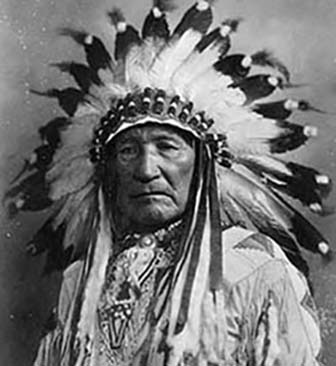Your Indian Ancestry
You don't have to go to the National Archives in DC to find the records you need to build your family tree.

Maybe you have wanted to know your ancestors for a long time and have perhaps been meaning to talk to that great aunt of yours about the Indians in your family. Grandma said that you were Indian and you have wondered how to search the records to find out which tribe you are from and exactly what your heritage might be. Well now is your chance to get started on this adventure and we will try to help you begin in a very simple way. We have all the tools to help you on your journey of building your Family Tree.
#1 Identify/Record Your Ancestors
#2 Build Your Own Family Tree
#3 Search Indian and Census Records
#4 Identify Tribe/Enrollment Process
Let me tell you about my journey in researching my family heritage. I have spent over 170 hours digging into the census and Indian records at the National Archives Building in Washington, DC and have experienced many "AHA" moments upon finding my relatives and ancestors in it's pages and micro fische slides. I have visited many counties and cemeteries where my ancestors have lived and been buried. I have spent some years searching the internet in it's expansion of genealogy records and have found others who were searching for some of our same relatives. I have found distant relatives and made connections with cousins, aunts and uncles who have made my life richer and my search easier. My Family Tree began growing as they shared information with me about my family.
I wish when I started this journey years ago, that I had the resources that are now available to you in your search for your ancestors.
If your are looking for those "Indian ancestors" in your family history, there are so many more records available for you now. You don't have to go to the National Archives in DC to find the records you need to build your family tree.
There are some steps you will need to take to begin your initial search.
Step #1 - Identify and Record Your Ancestors
To Begin: Print out copies of the following worksheets below.
Family Ancestor Worksheet
Five Generation Ancestor Worksheet
Handwrite your parents names and birthdates, marriage date and (if applicable) their death dates along with birth and death counties and states. List yourself and all their other children with birthdates and places of birth. Fill out a family chart form for every set of grandparents and great grandparents etc. Then print out the Five Generation Worksheet form on this page. This is only a worksheet to help you gather all the information to begin building your Family Tree. Handwrite your mother and father's names in the spaces available. List their birthdates, deathdates, Places of birth and death as well as marriage date. The next step is to record their parents (your grandparents) and the birth, marriage and death dates as well. Then continue to record their parents (your great grandparents) and the dates for them. Now you may very well be stumpted because you don't have all the dates you need for the record. Later on you can call or contact relatives who might fill in the blanks for you. Not everyone will know all the records you need but everyone will know one or two dates to help you fill in as much information as possible. This is the critical information you will need to start your Family Tree.
Contact your relatives because there is some truth in those family stories, although they may have changed over the years. Your challenge will be to find the birthdates, marriage dates and death dates, places, states, counties where your parents, grandparents and other ancestors were born, lived and died. Interview your cousins and aunts and uncles, especially your oldest relatives. Ask each one some of these questions to help you fill out the spaces on the family and ancestor charts.
Keep focused. It's easy to get sidetracked with information about cousins, aunts and uncles. Concentrate on your direct line, believe me, you do not have the time to pursue the identity of aunt Mabel’s first husband’s second cousin, once removed, intriguing as she may be.
Once you have your ancestry chart, and family worksheets filled in with all you know, you will have an at-a-glance knowledge of what you know and do not know. Sometimes there are contradictions with information and dates you have learned from your relatives. If you received 2 different dates for a birth of a relative, (such as Birth dates of 1912 and 1913 from another relative) just record it as (about 1912).
Step #2 - Build Your Own Family Tree
Now that your ready click one of the links below and begin building your own Family Tree. You will be amazed at the records you can find about your family and ancestors. I have used their bulletin board and other family records there placed by others with the same last names of my own ancestors. This is the most simple way for you to begin by transfering or recording the names and dates from your handwritten ancestorial records.
During your this journey you will be able to start building your family tree using the names of your direct ancestors, parents, grandparents and great grandparents, also using the dates you have found for births, marriages and death records.
Do not wait until you have found all the data you need to fill out these forms. You will be greatly helped in finding additional records as you fill out your information on your own family tree at Archives.com. So do not wait until you have contacted your relatives because that may delay your progress in getting started.
Step #3 - Search Historical and Census Records
As you build your family tree you can access their records for your Indian ancestors, whose names may be on tribal rolls. You will be able to search for your relatives using their records for every U.S. Census and Historical Records taken. You can search social security, military and grave site records as well. I promise you that you will be taking an adventure which will, as it does for many, become very interesting and exciting. I am predicting that you will have many "AHA" moments as you discover your ancestors and learn even more about them. Remember that this is a journey, not a quick fix. It is an ongoing process of discovery.

This article is the personal journey of Ancestral Discovery by
Princess Pale Moon,
Founder/President of the American Indian Heritage Foundation.
It is essential for you to establish the names and dates of your ancestors and know the states and counties where they lived, before you can contact tribal offices to secure their enrollment rules and application. That is why this 4 Step process is necessary and your search on the Ancestry Records links below are valuable because it may introduce you to other relatives who have already established your Indian ancestry. I have found that the Ancestry Records links below saved me hours of searching and it will be your most valuable source.
Step #4 - Identify Your Tribe and Enrollment Process
Once you have validated your ancestral names and vital dates through your family tree on Ancestry.com and their records, you may now be ready to find the tribe or tribes your family belong to. With information from your records, we will be able to help you locate the tribe or tribes in question and help you in the process of contacting those tribes personally. We will give you a series of questions to ask the tribal office, in order to complete the next step to take, in comparing your names with their tribal rolls and also fulfilling their requirements. Every tribe has their own unique enrollment process and requirements. But you must first have all your data and information ready before approaching the tribe about your ancestry lineage.
Begin your journey now by building your Family Tree with these links below and continue to return to Indians.org so you can learn tips to help you in finding the tribe or tribes your ancestors may have come from. Begin today and let us know how you are progressing in your search. We will be featuring tips on indians.org to help you. Check back often for instructions and information on other Indian family search sources.
Beginners Genealogy Lesson | How Do I Trace My American Indian Heritage | Definitions of Tribal Recognition | Enrollment in a Federally Recognized Tribe | Establishing Your American Indian Ancestry
